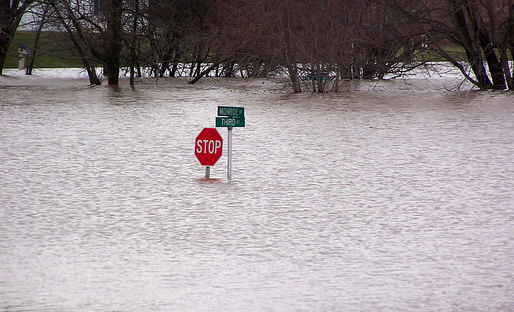

A professor from Texas A&M University is developing an AI-infused system to capture flooding data in real-time. The system, developed by professor of construction science Amir Behzadan, uses crowdsourced public images of floods to inform rescue and mitigation efforts.
Behzadan began developing the system in response to the lack of flood data-gathering measures in many neighborhoods around the United States. While flood gauges are operated by the U.S. Geological Survey and local governments, such maps often have limited coverage and do not provide detail on how floodwaters move in urban areas.
“When it comes to disaster impact, there are ‘data deserts’ — large areas in our communities in which we have very little information about the likelihood and extent of damage,” Behzadan explains. “If this data is available, informed decisions can be made about immediate needs like search and rescue, as well as longer-term needs such as debris cleanup, economic recovery efforts, and where insurance companies can focus.”
In response, the new system from Texas A&M uses artificial intelligence to gather, analyze, and distribute flood data, based on publicly-gathered photographs of stop signs. As floodwaters strike, residents can take a photograph of a stop sign and upload it to an online crowdsourcing platform called BluFix, also developed by the research team. The AI model can compare the floodwater photo with existing Google Street View images to estimate the depth of floodwaters. The resulting information can be communicated in real-time to the public, first-response teams, and authorities.
“In a way, it’s really a very simple concept,” said Behzadan, who is heading the project with collaborators Michelle Meyer, director of the Hazard Reduction and Recovery Center, and Texas A&M assistant professors of geography Courtney Thompson and Zhe Zhang. “When you think about it, how many smartphones and tablets are out there, where people post photos on social media for the fun of it? Imagine these devices turning into flood data collection devices.”
News of the research comes in the same month that Snøhetta and Asak Miljøstein unveiled a hexagonal pavement system to aid water management. 2023 has also seen Beijing-based Turenscape unveil a ‘floating forest’ which reimagines a former wasteland in Nanchang.
No Comments
Block this user
Are you sure you want to block this user and hide all related comments throughout the site?
Archinect
This is your first comment on Archinect. Your comment will be visible once approved.